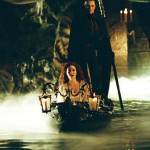
Most of us are aware of the underground sewers of Paris (think: Phantom of the Opera), the underground limestone quarries known as the Paris Catacombs (the final resting place of more than 6 million former citizens), and the underground subway system known as the Métro.
Yet there is another hidden wonder of the Parisian underground. It is the ancient river called Bièvre (or Beaver River). Its origin is a spring fed brook located in Guyancourt, approximately 21 kilometers (13 miles) from Paris. It is southwest of Paris and near Versailles. The Left Bank river enters Paris near the Stade Sébastien Charlety on the border of the 13th and 14th arrondissements. Its terminus is into the Seine River right below the Métro Bridge next to Gare d’Austerlitz. However, the whole time the river flows through Paris, it is completely underground, covered up by concrete.
This river was used by Neolithic tribes, the Parisii tribe, the Romans, and finally, the city of Paris. It was the second most important river to Paris next to the Seine. After Philippe II Augustus built the Left Bank wall in 1210 to protect the city from southern attacks, the Bièvre was isolated outside the city limits. One of its uses was to supply water for irrigation to an abbey as well as fortifications.
As the city grew, the area the Bièvre flowed through became very heavily industrialized. This was the area known as Faubourg Saint-Marcel. This faubourg (suburb) was a working class neighborhood that supported tanneries, textile manufacturers, dye-makers, millers, cobblers, and other assorted industries. The factories built up on its banks dumped garbage, pollutants, dyes, acidic materials, and downright nasty stuff into the river. Then the Industrial Revolution hit and it got even worse.
Jean-Jacques Rousseau, the famous philosopher, had this to say of his visit to Faubourg Saint-Marcel after returning to France in 1770:
“Entering through the Faubourg Saint-Marceau I saw only small dirty and stinking streets, ugly black houses, the air of filth, poverty, beggars, carters, the ravaudeuses, crieuses of herbal tea and old hats. All this struck me first to the point that everything I’ve seen in real magnificence in Paris could destroy that first impression, and that to me has always been a secret distaste for home of the capital.”
By the time of Baron Haussman in the mid-19th century, the Bièvre had become so unhealthy for anyone living or working near it that the decision was made to cover it up. Today, the river is buried in tunnels from the time it enters the city until its waters are discharged into the Seine. If you are lucky enough to walk the route of the river, you should watch for medallions embedded in the sidewalks. These mark the route of the river that flows directly under your feet. Oh, the river actually split into 2 branches at one point and an island was created. Today, that island has become the Square René le Gall (13th arrondissement).
The Faubourg Saint-Marcel is no longer a suburb of Paris. Nor is it a poor working class neighborhood and it doesn’t smell any more.
Do we have a lot of stories? Of course we do. I’m looking forward to sharing these with you. Please continue to visit our newsletter and blog. Perhaps you’d like to subscribe so that you don’t miss out on the most recent newsletter and blog posts.
Thanks so much for following my newsletter and blogs as well as my little journey through this incredibly interesting process of writing a series of niche walking tour books based on European historical periods or events.
– Stew
Please note that I do not and will not take compensation from individuals or companies I mention or promote in my blog.
Are you following us on Facebook and Twitter?
Please note that I do not and will not take compensation from individuals or companies I mention or promote in my blog.
Copyright © 2014 Stew Ross

